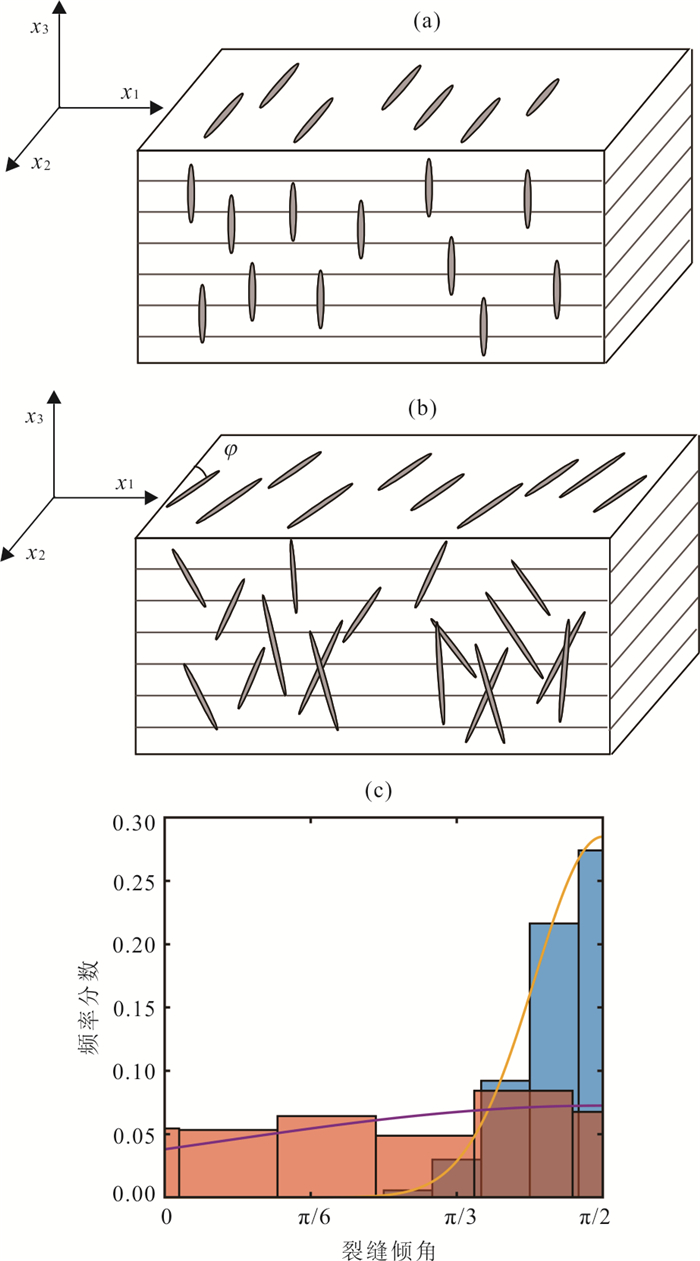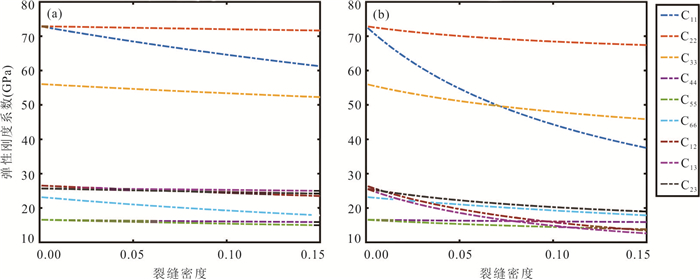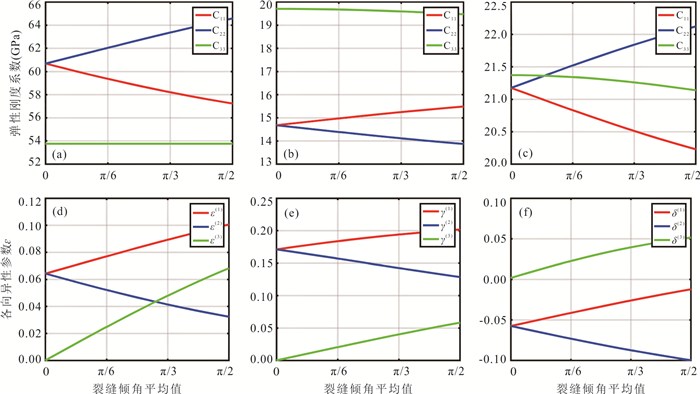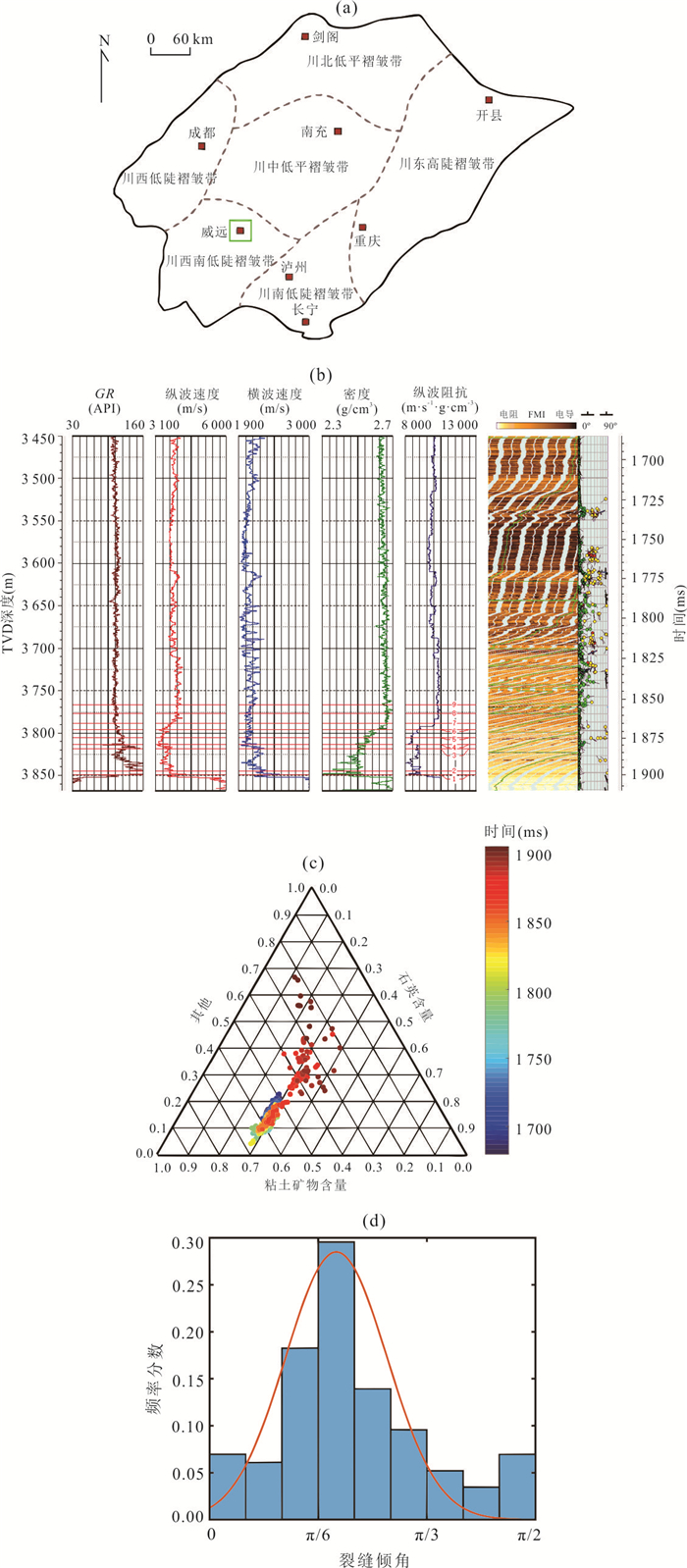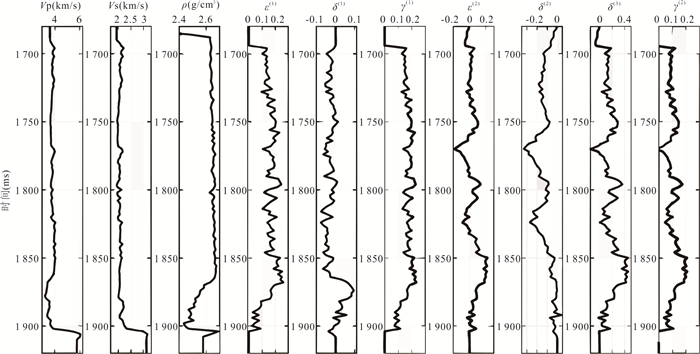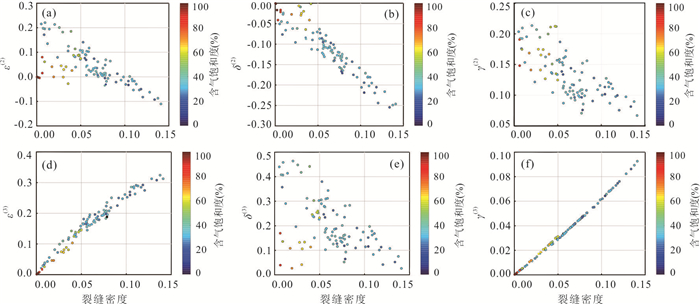|
Bakulin, A., Grechka, V., Tsvankin, I., 2000. Estimation of Fracture Parameters from Reflection Seismic Data-Part II: Fractured Models with Orthorhombic Symmetry. Geophysics, 65(6): 1803-1817. https://doi.org/10.1190/1.1444864 |
|
Batzle, M. L., Wang, Z. J., 1992. Seismic Properties of Pore Fluids. Geophysics, 57(11): 1396-1408. https://doi.org/10.1190/1.1443207 |
|
Carcione, J. M., Helle, H. B., Avseth, P., 2011. Source-Rock Seismic-Velocity Models: Gassmann versus Backus. Geophysics, 76(5): N37-N45. https://doi.org/10.1190/geo2010-0258.1 |
|
Cholach, P. Y., Schmitt, D. R., 2006. Intrinsic Elasticity of a Textured Transversely Isotropic Muscovite Aggregate: Comparisons to the Seismic Anisotropy of Schists and Shales. Journal of Geophysical Research, 111(B9): B09410. https://doi.org/10.1029/2005jb004158 |
|
Deng, J. X., Wang, H., Zhou, H., et al., 2015. Microtexture, Seismic Rock Physical Properties and Modeling of Longmaxi Formation Shale. Chinese Journal of Geophysics, 58(6): 2123-2136 (in Chinese with English abstract). |
|
Feng, Q. H., Xu, S. Q., Wang, S., et al., 2017. A Stochastic Permeability Model for Shale Gas Reservoirs Based on Embedded Discrete Fracture Model. Earth Science, 42(8): 1301-1313 (in Chinese with English abstract). |
|
Gui, J. C., Chen, P., Ma, T. S., 2019. The Spatial Distribution of Elastic Parameters of Orthotropic Rocks. Journal of Southwest Petroleum University (Science & Technology Edition), 41(3): 13-28 (in Chinese with English abstract). |
|
Gui, J. C., Ma, T. S., Chen, P., 2020. Rock Physics Modeling of Transversely Isotropic Shale: An Example of the Longmaxi Formation in the Sichuan Basin. Chinese Journal of Geophysics, 63(11): 4188-4204 (in Chinese with English abstract). doi: 10.6038/cjg2020N0294 |
|
Guo, W., Feng, Q. L., Khan, M. Z., 2021. Organic Matter Enrichment Mechanism of Black Shale in Wufeng- Longmaxi Formations: A Case Study from Jiaoye 143-5 Well at Chongqing. Earth Science, 46(2): 572-582 (in Chinese with English abstract). |
|
Guo, X. S., 2017. Sequence Stratigraphy and Evolution Model of the Wufeng-Longmaxi Shale in the Upper Yangtze Area. Earth Science, 42(7): 1069-1082 (in Chinese with English abstract). |
|
Hornby, B. E., Schwartz, L. M., Hudson, J. A., 1994. Anisotropic Effective-Medium Modeling of the Elastic Properties of Shales. Geophysics, 59(10): 1570-1583. https://doi.org/10.1190/1.1443546 |
|
Hudson, J. A., 1980. Overall Properties of a Cracked Solid. Mathematical Proceedings of the Cambridge Philosophical Society, 88(2): 371-384. https://doi.org/10.1017/S0305004100057674 |
|
Hudson, J. A., 1981. Wave Speeds and Attenuation of Elastic Waves in Material Containing Cracks. Geophysical Journal International, 64(1): 133-150. https://doi.org/10.1111/j.1365-246X.1981.tb02662.x |
|
Jones, L. E. A., Wang, H. F., 1981. Ultrasonic Velocities in Cretaceous Shales from the Williston Basin. Geophysics, 46(3): 288-297. https://doi.org/10.1190/1.1441199 |
|
Kaarsberg, E. A., 1959. Introductory Studies of Natural and Artificial Argillaceous Aggregates by Sound- Propagation and X-Ray Diffraction Methods. The Journal of Geology, 67(4): 447-472. https://doi.org/10.1086/626597 |
|
Li, S. G., Xu, T. J., Lü, Q. B., et al., 2019. Deep Shale Gas Dual "Sweet Spot" Parameter Seismic Prediction Technology. Natural Gas Industry, 39(S1): 311-317 (in Chinese). |
|
Li, X. Y., Wang, J. S., 2016. Recent Advances in Multicomponent Seismic and Fractured Reservoir Characterization. Petroleum Science Bulletin, 1(1): 45-60 (in Chinese with English abstract). |
|
Liu, Z. C., Zhang, F., Li, X. Y., 2019. Elastic Anisotropy and Its Influencing Factors in Organic-Rich Marine Shale of Southern China. Scientia Sinica Terrae, 49(11): 1801-1816 (in Chinese). |
|
Lonardelli, I., Wenk, H. R., Ren, Y., 2007. Preferred Orientation and Elastic Anisotropy in Shales. Geophysics, 72(2): D33-D40. https://doi.org/10.1190/1.2435966 |
|
Ma, Y. S., Cai, X. Y., Zhao, P. R., 2018. China's Shale Gas Exploration and Development: Understanding and Practice. Petroleum Exploration and Development, 45(4): 561-574 (in Chinese with English abstract). |
|
Qian, K. R., Zhang, F., Chen, S. Q., et al., 2016. A Rock Physics Model for Analysis of Anisotropic Parameters in a Shale Reservoir in Southwest China. Journal of Geophysics and Engineering, 13(1): 19-34. https://doi.org/10.1088/1742-2132/13/1/19 |
|
Rüger, A., 1997. P-Wave Reflection Coefficients for Transversely Isotropic Models with Vertical and Horizontal Axis of Symmetry. Geophysics, 62(3): 713-722. https://doi.org/10.1190/1.1444181 |
|
Sarout, J., Guéguen, Y., 2008. Anisotropy of Elastic Wave Velocities in Deformed Shales: Part 2-Modeling Results. Geophysics, 73(5): D91-D103. https://doi.org/10.1190/1.2952745 |
|
Sayers, C. M., 1994. The Elastic Anisotrophy of Shales. Journal of Geophysical Research: Solid Earth, 99(B1): 767-774. https://doi.org/10.1029/93jb02579 |
|
Sayers, C. M., 2013. The Effect of Kerogen on the Elastic Anisotropy of Organic-Rich Shales. Geophysics, 78(2): D65-D74. https://doi.org/10.1190/geo2012-0309.1 |
|
Schoenberg, M., 1980. Elastic Wave Behavior across Linear Slip Interfaces. The Journal of the Acoustical Society of America, 68(5): 1516-1521. https://doi.org/10.1121/1.385077 |
|
Schoenberg, M., Douma, J., 1988. Elastic Wave Propagation in Media with Parallel Fractures and Aligned Cracks. Geophysical Prospecting, 36(6): 571-590. https://doi.org/10.1111/j.1365-2478.1988.tb02181.x |
|
Schoenberg, M., Helbig, K., 1997. Orthorhombic Media: Modeling Elastic Wave Behavior in a Vertically Fractured Earth. Geophysics, 62(6): 1954-1974. https://doi.org/10.1190/1.1444297 |
|
Schoenberg, M., Sayers, C. M., 1995. Seismic Anisotropy of Fractured Rock. Geophysics, 60(1): 204-211. https://doi.org/10.1190/1.1443748 |
|
Shao, C. R., Yin, X. Y., Zhang, F. M., et al., 2009. Shear Wave Velocity Inversion with Routine Well Logs Based on Rock Physics and Multi-Mineral Analysis. Earth Science, 34(4): 699-707 (in Chinese with English abstract). doi: 10.3321/j.issn:1000-2383.2009.04.017 |
|
Shi, S. Z., Liu, Z. Y., Feng, J. A., et al., 2020. Using 3D Seismic Exploration to Detect Ground Fissure. Advances in Geo-Energy Research, 4(1): 13-19. https://doi.org/10.26804/ager.2020.01.02 |
|
Thomsen, L., 1986. Weak Elastic Anisotropy. Geophysics, 51(10): 1954-1966. https://doi.org/10.1190/1.1442051 |
|
Tsvankin, I., 1997. Anisotropic Parameters and P-Wave Velocity for Orthorhombic Media. Geophysics, 62(4): 1292-1309. https://doi.org/10.1190/1.1444231 |
|
Vernik, L., Nur, A., 1992. Ultrasonic Velocity and Anisotropy of Hydrocarbon Source Rocks. Geophysics, 57(5): 727-735. https://doi.org/10.1190/1.1443286 |
|
Vernik, L., Liu, X. Z., 1997. Velocity Anisotropy in Shales: A Petrophysical Study. Geophysics, 62(2): 521-532. https://doi.org/10.1190/1.1444162 |
|
Wang, Z. J., 2002. Seismic Anisotropy in Sedimentary Rocks, Part 2: Laboratory Data. Geophysics, 67(5): 1423-1440. https://doi.org/10.1190/1.1512743 |
|
Wei, L. M., Wang, Y., Zhang, T. C., et al., 2019. Establishment of Geological Model of Deep Shale Reservoir in Southern Sichuan Basin. Natural Gas Industry, 39(S1): 66-70 (in Chinese with English abstract). |
|
Wei, Q. Q., Wang, Y., Han, D. H., et al., 2021. Combined Effects of Permeability and fluid Saturation on Seismic Wave Dispersion and Attenuation in Partially-Saturated Sandstone. Advances in Geo-Energy Research, 5(2): 181-190. https://doi.org/10.46690/ager.2021.02.07 |
|
Wenk, H. R., Lonardelli, I., Franz, H., et al., 2007. Preferred Orientation and Elastic Anisotropy of Illite-Rich Shale. Geophysics, 72(2): E69-E75. https://doi.org/10.1190/1.2432263 |
|
Winterstein, D. F., 1990. Velocity Anisotropy Terminology for Geophysicists. Geophysics, 55(8): 1070-1088. https://doi.org/10.1190/1.1442919 |
|
Xiao, B., Liu, S. G., Ran, B., et al., 2021. Study on Sedimentary Tectonic Pattern of Wufeng Formation and Longmaxi Formation in the Northern Margin of Sichuan Basin, South China. Earth Science, 46(7): 2449-2465 (in Chinese with English abstract). |
|
Yu, W. H., Zhang, L. Q., Wang, J. Y., et al., 2003. Constitutive Problem for Seismic Wave Propagation in Discrete Media. Earth Science, 28(3): 315-322 (in Chinese with English abstract). |
|
Zhang, F., 2017. Estimation of Anisotropy Parameters for Shales Based on an Improved Rock Physics Model, Part 2: Case Study. Journal of Geophysics and Engineering, 14(2): 238-254. https://doi.org/10.1088/1742-2140/aa5afa |
|
Zhang, F., 2019. A Modified Rock Physics Model of Overmature Organic-Rich Shale: Application to Anisotropy Parameter Prediction from Well Logs. Journal of Geophysics and Engineering, 16(1): 92-104. https://doi.org/10.1093/jge/gxy008 |
|
Zhang, F., Li, X. Y., Qian, K. R., 2017. Estimation of Anisotropy Parameters for Shale Based on an Improved Rock Physics Model, Part 1: Theory. Journal of Geophysics and Engineering, 14(1): 143-158. https://doi.org/10.1088/1742-2140/14/1/143 |
|
邓继新, 王欢, 周浩, 等, 2015. 龙马溪组页岩微观结构、地震岩石物理特征与建模. 地球物理学报, 58(6): 2123-2136. |
|
冯其红, 徐世乾, 王森, 等, 2017. 基于嵌入离散裂缝的页岩气藏视渗透率模型. 地球科学, 42(8): 1301-1313. doi: 10.3799/dqkx.2017.551 |
|
桂俊川, 陈平, 马天寿, 2019. 正交各向异性岩石弹性参数的空间展布. 西南石油大学学报(自然科学版), 41(3): 13-28. |
|
桂俊川, 马天寿, 陈平, 2020. 横观各向同性页岩岩石物理模型建立——以龙马溪组页岩为例. 地球物理学报, 63(11): 4188-4204. doi: 10.6038/cjg2020N0294 |
|
郭伟, 冯庆来, Khan, M. Z., 2021. 重庆焦页143-5井五峰组-龙马溪组黑色页岩有机质富集机理. 地球科学, 46(2): 572-582. doi: 10.3799/dqkx.2020.049 |
|
郭旭升, 2017. 上扬子地区五峰组-龙马溪组页岩层序地层及演化模式. 地球科学, 42(7): 1069-1082. doi: 10.3799/dqkx.2017.086 |
|
李曙光, 徐天吉, 吕其彪, 等, 2019. 深层页岩气双"甜点"参数地震预测技术. 天然气工业, 39(增刊1): 113-117. |
|
李向阳, 王九拴, 2016. 多波地震勘探及裂缝储层预测研究进展. 石油科学通报, 1(1): 45-60. |
|
刘子淳, 张峰, 李向阳, 2019. 中国南方富有机质海相页岩弹性各向异性特征和影响因素. 中国科学: 地球科学, 49(11): 1801-1816. |
|
马永生, 蔡勋育, 赵培荣, 2018. 中国页岩气勘探开发理论认识与实践. 石油勘探与开发, 45(4): 561-574. |
|
邵才瑞, 印兴耀, 张福明, 等, 2009. 利用常规测井资料基于岩石物理和多矿物分析反演横波速度. 地球科学, 34(4): 699-707. http://www.earth-science.net/article/id/1876 |
|
魏力民, 王岩, 张天操, 等, 2019. 四川盆地南部深层页岩储层地质模型的建立. 天然气工业, 39(S1): 66-70. |
|
肖斌, 刘树根, 冉波, 等, 2021. 四川盆地北缘五峰组和龙马溪组沉积构造格局研究. 地球科学, 46(7): 2449-2465. doi: 10.3799/dqkx.2020.208 |
|
於文辉, 张丽琴, 王家映, 等, 2003. 离散介质中地震波传播的本构问题. 地球科学, 28(3): 315-322. http://www.earth-science.net/article/id/1260 |
 dqkxzx-49-1-299-附录.docx
dqkxzx-49-1-299-附录.docx











 下载:
下载:
